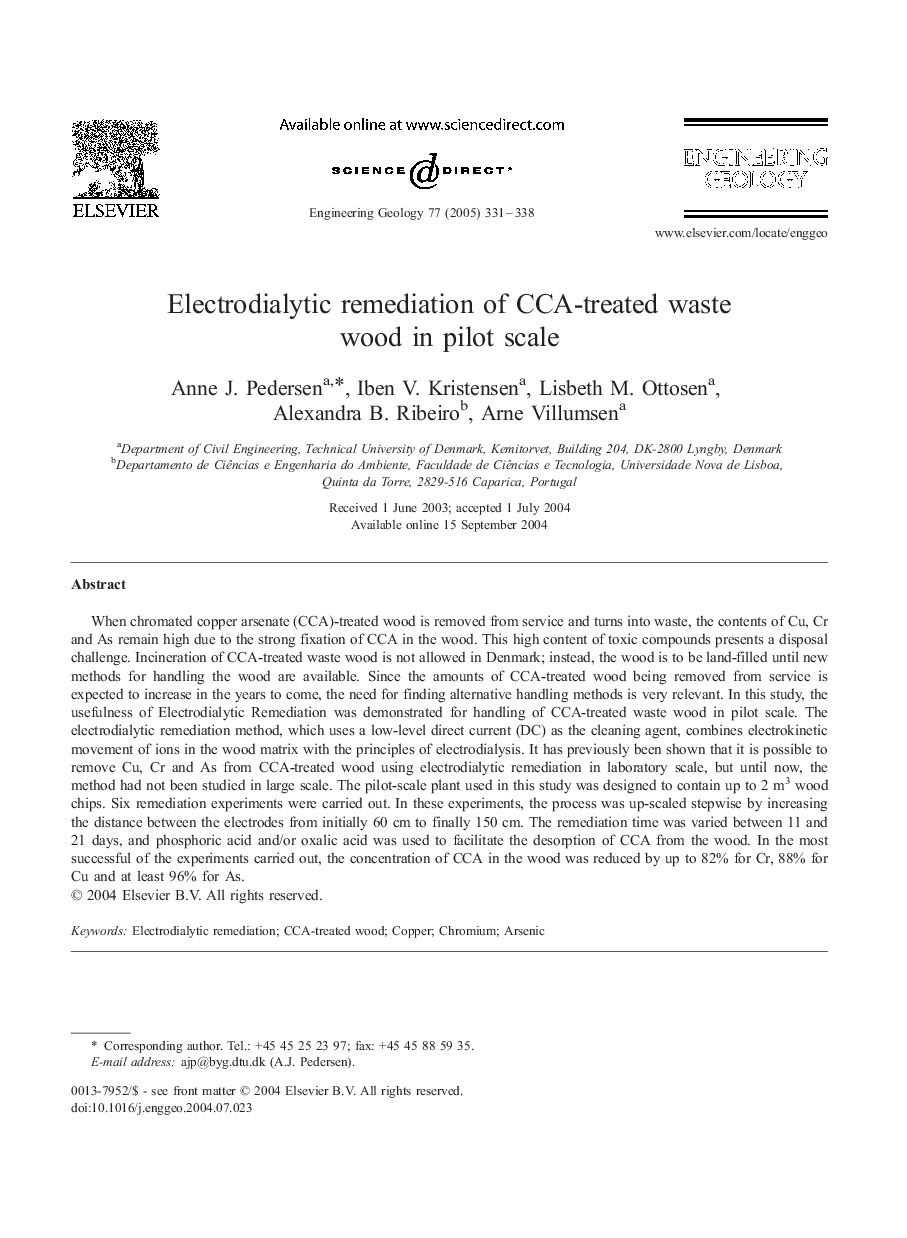| Article ID | Journal | Published Year | Pages | File Type |
|---|---|---|---|---|
| 9537800 | Engineering Geology | 2005 | 8 Pages |
Abstract
When chromated copper arsenate (CCA)-treated wood is removed from service and turns into waste, the contents of Cu, Cr and As remain high due to the strong fixation of CCA in the wood. This high content of toxic compounds presents a disposal challenge. Incineration of CCA-treated waste wood is not allowed in Denmark; instead, the wood is to be land-filled until new methods for handling the wood are available. Since the amounts of CCA-treated wood being removed from service is expected to increase in the years to come, the need for finding alternative handling methods is very relevant. In this study, the usefulness of Electrodialytic Remediation was demonstrated for handling of CCA-treated waste wood in pilot scale. The electrodialytic remediation method, which uses a low-level direct current (DC) as the cleaning agent, combines electrokinetic movement of ions in the wood matrix with the principles of electrodialysis. It has previously been shown that it is possible to remove Cu, Cr and As from CCA-treated wood using electrodialytic remediation in laboratory scale, but until now, the method had not been studied in large scale. The pilot-scale plant used in this study was designed to contain up to 2 m3 wood chips. Six remediation experiments were carried out. In these experiments, the process was up-scaled stepwise by increasing the distance between the electrodes from initially 60 cm to finally 150 cm. The remediation time was varied between 11 and 21 days, and phosphoric acid and/or oxalic acid was used to facilitate the desorption of CCA from the wood. In the most successful of the experiments carried out, the concentration of CCA in the wood was reduced by up to 82% for Cr, 88% for Cu and at least 96% for As.
Related Topics
Physical Sciences and Engineering
Earth and Planetary Sciences
Geotechnical Engineering and Engineering Geology
Authors
Anne J. Pedersen, Iben V. Kristensen, Lisbeth M. Ottosen, Alexandra B. Ribeiro, Arne Villumsen,
